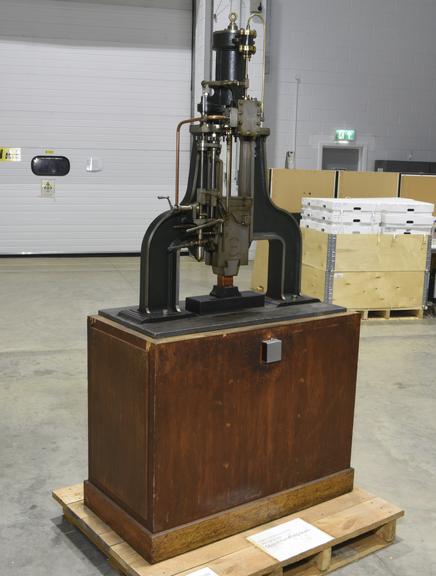
Model of James Nasmyth's direct-action steam hammer
- Made:
- 1843-1857 in Manchester
- maker:
- James Hall Nasmyth

Model of James Nasmyth's direct-action steam hammer, scale 1:4
This model represents the first steam hammer, invented by James Nasmyth in 1839 and patented by him in 1842. The hammer is single acting and in addition to the original hand operating gear has the automatic regulating device invented in 1843 by Robert Wilson, one of Nasmyth’s partners.
The hammer-head is connected with the piston of the steam cylinder and is guided between two standards. When hand operated, steam is admitted below the piston by means of a slide valve on the side of the cylinder and when the hammer-head has been lifted to the required height, it by a further movement of the valve allowed to fall upon the forging. For automatic working the slide valve is connected with the piston of a small overhead cylinder which acts in conjunction with an arrangement of levers operated partly be a cam and partly by momentum. By means of this mechanism the number and strength of the blows can be regulated irrespective of the thickness of the forging under treatment.
Soon after its invention, the steam hammer was greatly increased in power by admitting steam above the piston on the downward stroke, and so rendering it double acting.
Details
- Category:
- Hand and Machine Tools
- Object Number:
- 1857-3
- Materials:
- cast iron, wrought iron, gunmetal and brass (copper, zinc alloy)
- Measurements:
-
overall: 2070 mm x 1100 mm x 577 mm,
object on stand: 2000 mm x 1100 mm x 575 mm, 390kg
overall, inc pallet: 410kg
- type:
- models (representations) and steam hammers
- credit:
- Nasmyth, James




